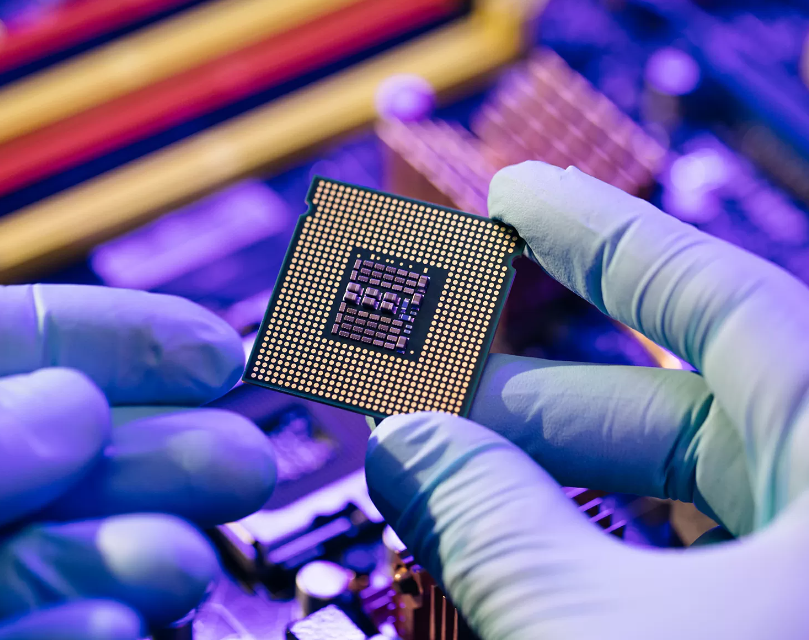The semiconductor industry, which is increasingly important in terms of economic security, is being divided by the Sino-U.S. rivalry. Japan and the United States, which have strong semiconductor manufacturing equipment manufacturers, will see their equipment exports to China decrease for the first time in three years in 2022. The background is that the United States restricts the export of manufacturing equipment to China. Japan and the Netherlands also intend to follow, and the chaos in the supply chain may expand.
“The Chinese market will decline sharply from October to December 2022,” said an executive from a Japanese semiconductor-related group. According to trade statistics, in terms of semiconductor equipment exports to China from October to December, Japan decreased by 16% year-on-year, the United States decreased by 50%, and the Netherlands decreased by 44%. From the perspective of exports outside China, Japan increased by 26%, and the United States increased by 10%, in stark contrast. There are three main reasons. During this period, production and equipment investment stagnated due to strict travel restrictions caused by China’s prevention and control of the epidemic. In addition, signs of a deceleration in the semiconductor market, which had previously remained in short supply, strengthened from the second half of 2022, which also appears to have had an impact.
Chinese media reported that China’s imports of semiconductor equipment in 2022 will decrease by 15% from 2021 to US$34.7 billion, the first decrease in three years. Statistics from China Customs show that from January to February 2023, imports of semiconductor equipment will decrease by 21% year-on-year, and imports of semiconductors will decrease by 25%.
Signs of slowdown in semiconductor equipment exports to China strengthen
The third is the US export control to China that began in October 2022 and the demand for semiconductors has slowed down, and the signs of the slowdown are currently strengthening. The United States changed the export of equipment and software required for the manufacture of cutting-edge semiconductors such as logic (computing) below 14 to 16 nanometers to the licensing system of the US Department of Commerce. The export of equipment, etc. for the manufacture of cutting-edge products is de facto prohibited.
Lam Research, a large U.S. equipment company, believes that due to export controls, its operating income in 2023 may decrease by 2 billion to 2.5 billion US dollars. The scale accounts for about 10% of the whole. The company has strengths in areas such as etching equipment for surface processing. From the perspective of Tokyo Electron, exports to China will account for 26% of its operating income in 2021. With a market share of nearly 90% of the photosensitive agent coating and developing equipment, it has an advantage in the field of cutting-edge semiconductor manufacturing equipment. Hiroshi Kawamoto, the company’s executive director, said, “If you can’t get US equipment, your Chinese (semiconductor manufacturer) customers won’t be able to produce, and as a result, our equipment won’t be sold.”
The U.S. has asked Japan and the Netherlands to take action in order to strengthen export controls, and the two countries are summarizing relevant content. Dutch Foreign Trade and Development Cooperation Minister Liesje Schreinemacher said that “export restrictions should be expanded as early as summer”. Japan’s Minister of Economy, Trade and Industry Yasutoshi Nishimura also pointed out that “we hope to respond appropriately based on the movement of restrictions in various countries.”
It is difficult to measure the impact on the business side. Japanese equipment manufacturers have been observing whether their products are used in the manufacture of cutting-edge semiconductors, but they cannot see the specific content at present, and the situation of “will pay attention to how much impact and risk it will have on performance” (equipment manufacturers) continues.
The GPU (image processing semiconductor) required for Nvidia’s artificial intelligence processing is included in the scope of control. In order not to violate regulatory measures, alternatives with reduced performance are being exported. Intel of the United States stated that it is “the most complicated export management rule issued so far”, and industry groups and others have also expressed concern that commercial transactions outside the scope of control may also shrink.
Generic products hold firm
Non-sophisticated areas are outside the scope of regulation and easy to trade. Demand for semiconductors used in pure electric vehicles (EVs) is strong, and major domestic equipment manufacturers in Japan said in unison that “China is an important customer and will continue to expand their business.” Makoto Hashimoto, chairman of Japan’s SUMCO, a silicon wafer company that is not easily affected, said that if China’s self-manufacturing of semiconductors becomes active, “China may buy more wafers.”
The overall demand for semiconductor manufacturing equipment in the world will be strong in 2022, but it is still difficult to predict how much negative impact China’s deceleration will have.
The top semiconductor manufacturing equipment is Applied Materials of the United States, followed by ASML of the Netherlands and Tokyo Electron of Japan. Exports of semiconductor equipment from Japan and the United States have hit record highs, and the Netherlands is also at a high level. If it is limited to exports to China, the United States will reduce by 25%, the Netherlands by 6%, and Japan by 2%. The changes in exports to China are prominent.
Against the background of intensified confrontation between China and the United States, geopolitical risks such as the chaos of the semiconductor supply chain have been strongly realized. Countries and regions are trying to increase semiconductor production by using huge subsidies and so on. From a structural point of view, it is difficult for semiconductor equipment to be exported to China. The U.S. controls also include design software for semiconductor circuits, and industry insiders believe that “China’s cutting-edge development will be delayed by 10 years.” In China’s cutting-edge manufacturing facilities, the participation of American technicians is also restricted. According to Minoru Nogi, the chief researcher at the Japan Research Institute, “the blow is huge, and it is almost impossible to catch up with American technology.”
Since cutting-edge semiconductors dominate the development of advanced products, the United States has introduced restrictions on China for security purposes. Changes in companies’ export strategies and disruptions in semiconductor supply chains are spreading.
Post time: Mar-30-2023


